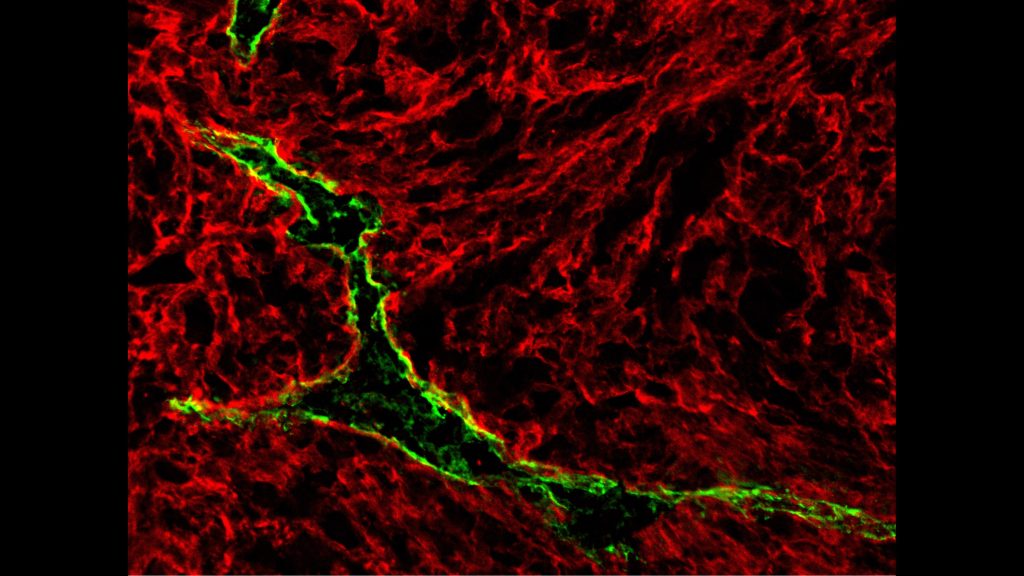
Summary of article Isolation and characterization of circulating lymphatic endothelial colony forming cells. Terri A DiMaio, Breanna L Wentz, Michael Lagunoff Exp Cell Res 2016 Jan 1;340(1):159-69 doi: 10.1016/j.yexcr.2015.11.015. Epub 2015 Nov 17. PMID: 26597759 PMCID: PMC4903174 DOI: 10.1016/j.yexcr.2015.11.015 https://pubmed.ncbi.nlm.nih.gov/26597759/
The lymphatic system is a vessel system that takes excess fluid from tissues and returns it to the blood vessel system, thereby maintaining fluid levels to avoid swelling (called edema). It also traffics key immune cells from and to tissues, including dendritic cells.
The lymphatic fluid (known as lymph) circulates inside a network of vessels called lymphatic vessels that branch into all tissues and organs of the body. These vessels are different from the vessels (arteries, veins, and capillaries) where blood circulates.
Blood and lymph vessel walls are made of specialized cells called blood endothelial and lymphatic endothelial cells (LEC), respectively.
Endothelial progenitor cells, present in the blood circulation, traffic to sites of angiogenesis (the process of forming new blood vessels) and may play a role in this process. Before this study, only one main type of endothelial progenitor cell was known.
This study aimed to characterize endothelial progenitor cells. The study found two main types of endothelial colony-forming cells (a method of purification for endothelial progenitor cells): blood-like endothelial progenitor cells and lymphatic-like endothelial progenitor cells. This study further characterized these two endothelial progenitor cell types. The results indicated that lymphatic endothelial precursor cells respond to different cytokines (signaling proteins that help control inflammation) than the blood endothelial precursor cells, indicating that they are a unique cell type.
This study demonstrated that there are lymphatic-specific endothelial progenitor cells, which is important because it shades light on the processes of lymphangiogenesis (lymph vessel formation) versus angiogenesis, and possibly in the regeneration and growth of lymph vessels. Understanding how lymph vessels grow and feed tissues, including tumors, is important, given that the proliferation of blood and lymph vessels is necessary for tumor prevalence and for metastasis to occur.
These results can be useful for the development of therapies to inhibit edema or lymphangiogenesis, thereby potentially preventing tumor growth.
